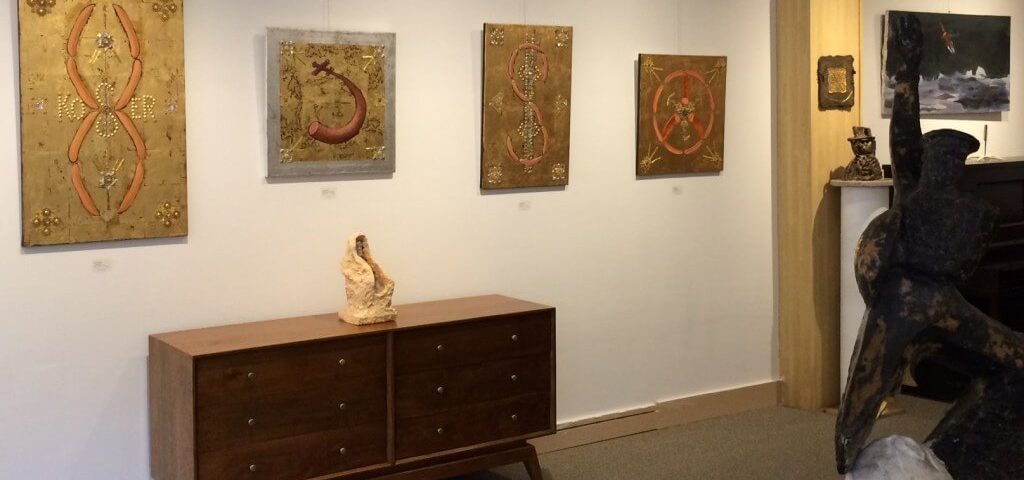Wednesday, July 30th, 2014, 7:31 am
By An Uong
Cambridge, MA – Drive down any highway in America and you’re bound to come across the famed golden arches. They hover high above other businesses, striking a dark sky with their bright yellow light. In the stillness of midnight, McDonald’s is not alone in its representation of the American appetite. It is accompanied by other brands, whether they fall under the category of fast food or processed food.
Artist Alex Khomski, who immigrated to America from Russia, has an especially finessed sensitivity to the commercialized access to food. His work, which was exhibited until July 7th as part of “Being Touched” at the Touch Art Gallery in Cambridge, addresses the way that Americans worship products that are often pumped full of chemicals.
His paintings and sculptures are humorous but laced with stark commentary on the current state of our relationship to food. Khomski’s “A Flight,” 2012, points directly to how the food industry fuels society. The image of an airplane taking off with a curved jet of sausage extending behind it is set against a distressed gold background, with jewels adoring the corners of the piece. The strong parallels between Khomski’s work and the iconography of the Renaissance period address today’s religious views on food, and the almost blind worship of mass-produced goods.
Another painting, “The Modern Icon,” 2009, focuses directly on the holiness attached to genetically modified and mass-produced goods. The background is similarly gold and distressed, but upon it is painted two hot dogs clad in buns, one at the top, one at the bottom, and condiments — a bottle of Heinz Ketchup sits on the left, and a bottle of French’s Honey Mustard is on the right. These four icons surround a diamond created by hot dog links, which in turn surround a pattern of pearls and jewels. Rays of gold extend from the links, further glorifying their presence.
The entire piece is almost an altar of sorts, one that reflects real-life refrigerator altars, filled with decorative elements and put together by someone whose life relies heavily on the speed and ease of grabbing a hot dog on the go. Whether or not the public is aware of this trend, the fixation continues in the everyday visits to the nearby grocery store.
I make naïve work,” Khomski said. Its simplicity and forwardness is a necessity especially when the subject matter is overtly complicated. “These pieces are about the overconsumption of food,” Khomski continued. The repeated use of processed meats, genetically modified fruits and vegetables and popular brand logos provokes thoughts on how food is fed through the system to get to our mouths.
Khomski’s artwork seems obvious the moment one looks at it, but it is layered with clever double meanings and visual puns. Between the assembly of pickles into a Mercedes symbol and the glorification of sausages, Khomski asks the necessary question, “What do we value?”
(To view more of his work, or to check for gallery showings, visit his artist profile.)


